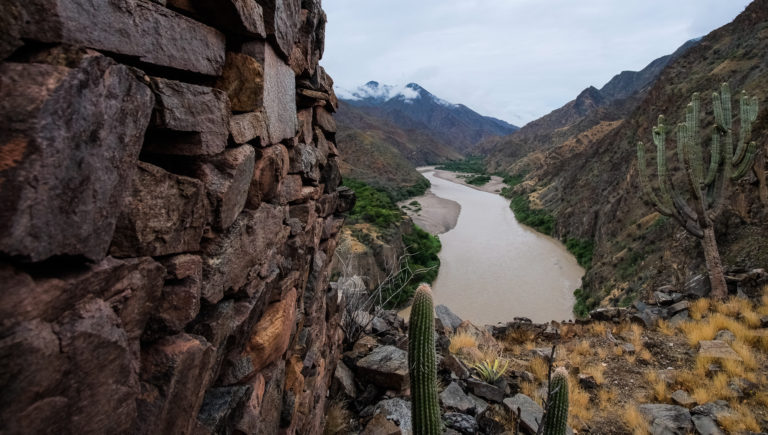New legal analysis: Dams that threaten the source of the Amazon can’t legally be built
By: Waterkeeper Alliance

The environmental impact assessments for two dams planned on Marañón River, the main tributary to the Amazon, have expired, meaning the dams can no longer legally be built, according to a new legal analysis done by the Peruvian Society for Environmental Law, in partnership with Waterkeeper Alliance and Marañón Waterkeeper.
The Marañón is one of five great rivers connecting the Andes with the Peruvian Amazon. As the hydrological source of the Amazon, it plays a key role in the flow of sediments into the lower basin, as well as the migration of fish, an important source of food for hundreds of thousands of people.
The planned Veracruz and Chadin II dams would block a portion of the upper-middle Marañón, flooding a 320 kilometer-long stretch of river (198 mile-long) and essentially blocking the free flow of water, nutrients, sediments, and aquatic life between the upper and the lower sections of the river. The projects were met with deep concern by environmental organizations, and, in the case of Chadin II, with heavy opposition from locals and human rights organizations. That project was also tied to the Odebrecht corruption scandal. Odebrecht, a Brazillian construction company, in 2016 signed the largest anti-corruption settlement in world history.
In addition, key legal underpinnings of the planned dam are no longer valid. The Peruvian Society for Environmental Law’s legal analysis found that:
- The environmental impact assessments of both the Veracruz and Chadin II dams have expired, because neither company has started construction within the approved timeframe. This information has not been communicated to the local people who would be affected by the dams. The Peruvian Government does not have a method to communicate this information publicly; often leaving populations affected by large infrastructure projects in limbo. The Peruvian Society for Environmental Law urges SENACE, the responsible Peruvian authority, to include the validity status of an environmental impact assessment in its public registry.
- The environmental impact assessments for the two projects did not consider the cumulative environmental impacts of both dams being built, despite this being required in Peru’s legal framework. This was not flagged by authorities at the time. Importantly, the Ministry of Environment has yet to develop a standardized method for companies to evaluate cumulative impacts. The Peruvian Society for Environmental Law urges Peru’s Ministry of Environment to develop guidelines for assessing cumulative impacts of infrastructure projects, and for Senace, the authority that evaluates environmental impact assessments, to prioritize this issue in its revision processes.
-
The economic and energy rationale for the Veracruz and Chadin II dams to be built is no longer viable. Peru has an oversupply of electricity and the Peruvian government has cancelled an earlier call for energy from large hydroelectric power plants. Enel, the company behind Veracruz, has openly announced that it is moving away from mega-dam projects because of high socio-environmental costs and long construction times. Recently, Enel has sent an official letter to the Peruvian government stating their interest to cancel their contract. The Peruvian Society for Environmental Law urges the Peruvian government to respond to their request and cancel the contract.
Decisions on Peru’s national energy policy require a careful understanding of the country’s energy needs, the availability of new energy-generating technology, and the environmental and social costs of infrastructure projects. Thousands of local and indigenous peoples depend on Peru’s pristine, wild ecosystems, so the nation must make decisions about using its natural resources in a way that ensures development is sustainable and based on sound public participation processes.
The full legal report, in English, can be downloaded here.
Do you want to take action for the Marañón? Sign the petition asking Peru’s President, Martín Vizcarra, to ensure this dam and others do not get built.
Feature image by Ben Webb.